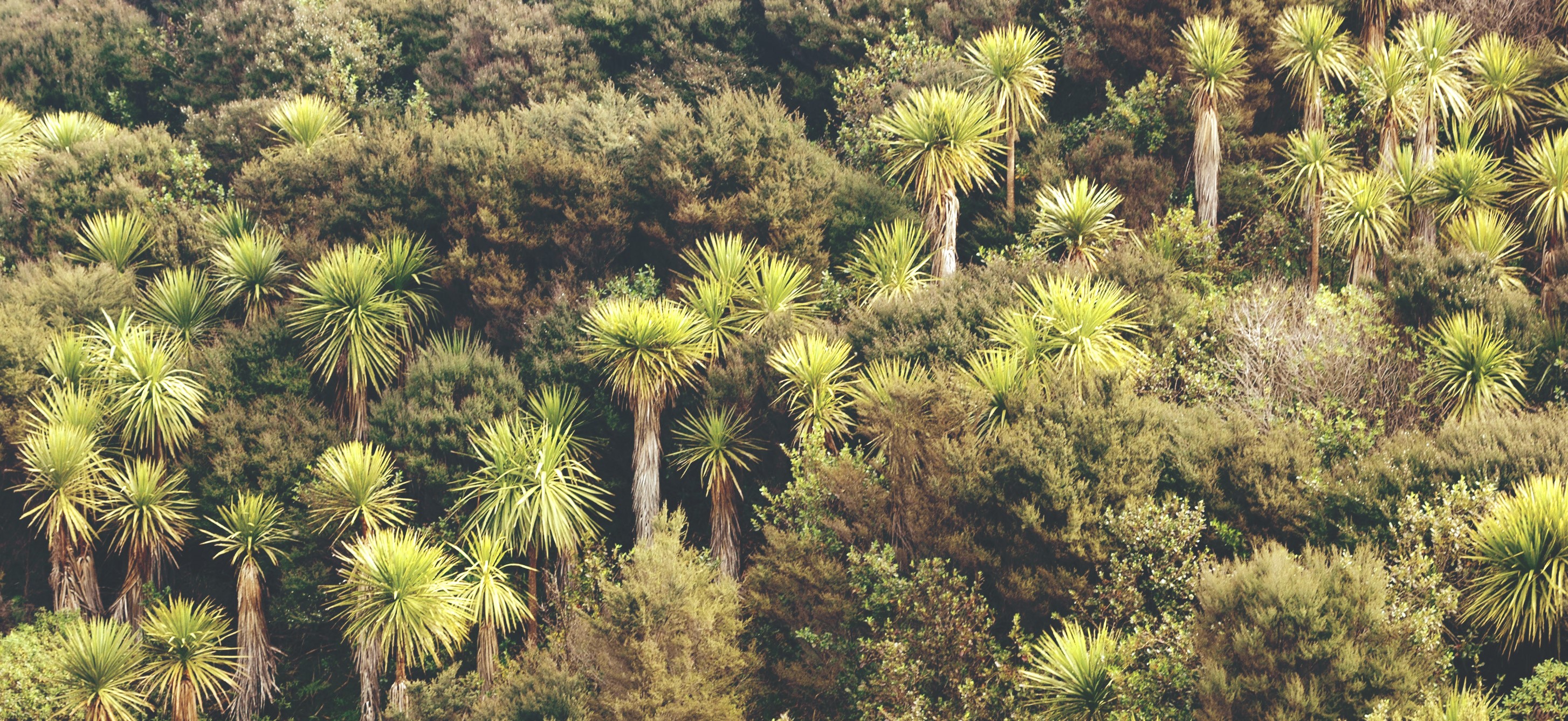Flora
25
September
2025

Tī kōuka/Cabbage tree - Cordyline australis
Tī kōuka, ti kāuka, tī tree, cabbage tree, cordyline australis - whatever you call this symbol of Āotearoa’s landscapes, it is one of the most easily identified native trees.
Tī kōuka is a mainstay of the forest reappearing on Motutapu Island. It is important as a pioneer species because it grows quickly and readily in all but the driest, most exposed locations. It also forms part of the maturing forest.
Its fleshy, bulbous roots help to stabilise soils, and it also thrives in swampy conditions. Ageing trees can regenerate by sprouting from the base of the trunk, and the names tī kouka/tī kāuka point to its ability to withstand both wind and fire.
It is of great importance and appeal to wildlife. Birds, insects and lizards are drawn to tī kōuka throughout the year. Honey scented flowers, pollen, nectar and berries make it an invaluable food source. The crown and dry leaves that clothe the trunk make it an inviting habitat.
Tī kōuka plays an important role in te ao Māori, with multiple uses from food and medicine to high quality fibre. When dry the leaves made effective thatch, rain capes and baskets, and ignited readily as fire starters. Tī kōuka were planted by Māori to mark urupā, trails, boundaries and other significant points in the landscape.
Like many of our native plants, tī kōuka is a reminder of Āotearoa’s more tropical past. The sudden decline disease that threatened this important species some years ago is now considered to be in retreat. Tī kōuka continues to flourish in the regenerating Motutapu forest, planted by volunteers and now spread by birds.

